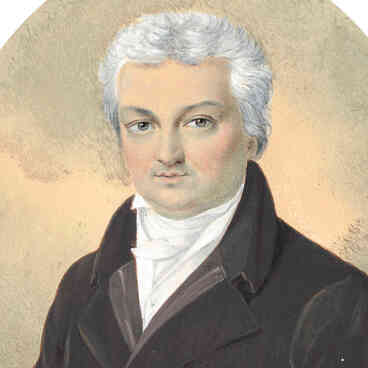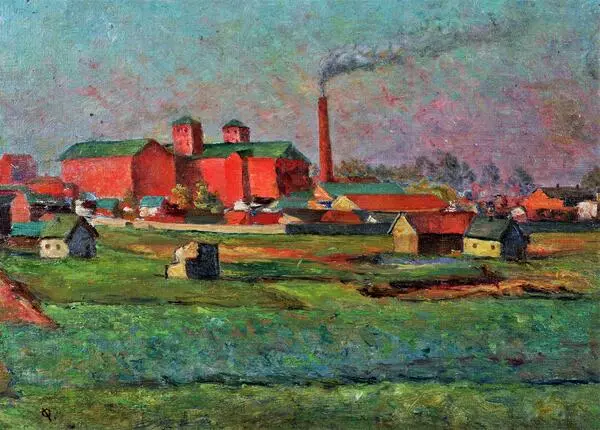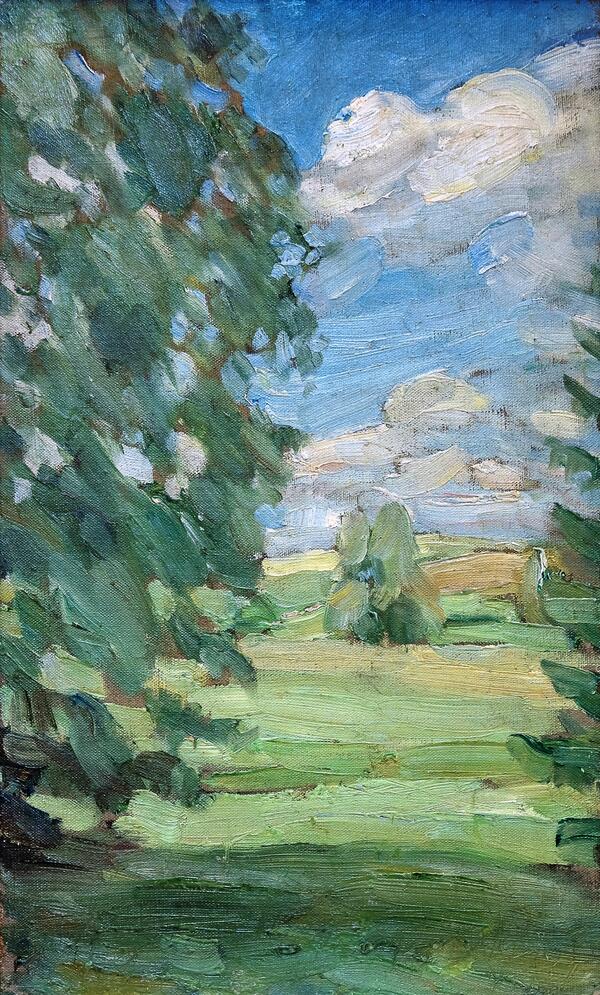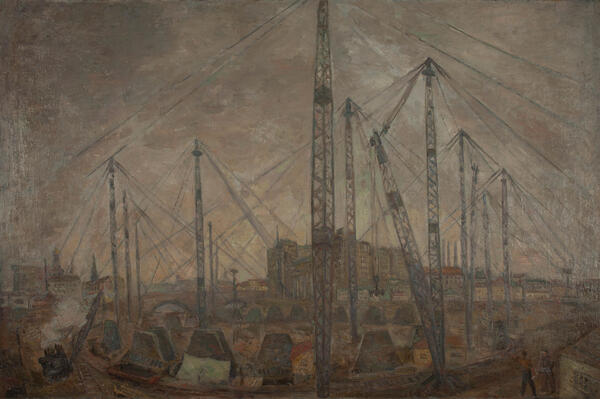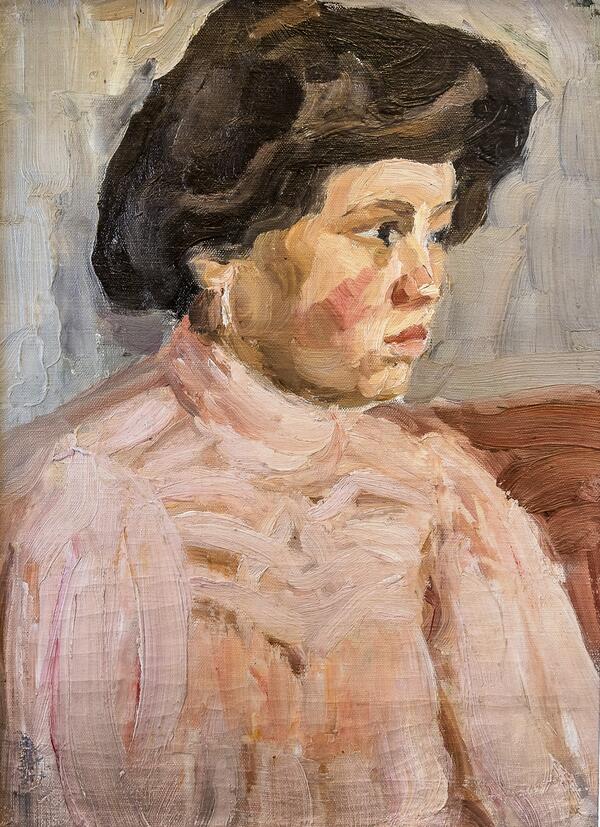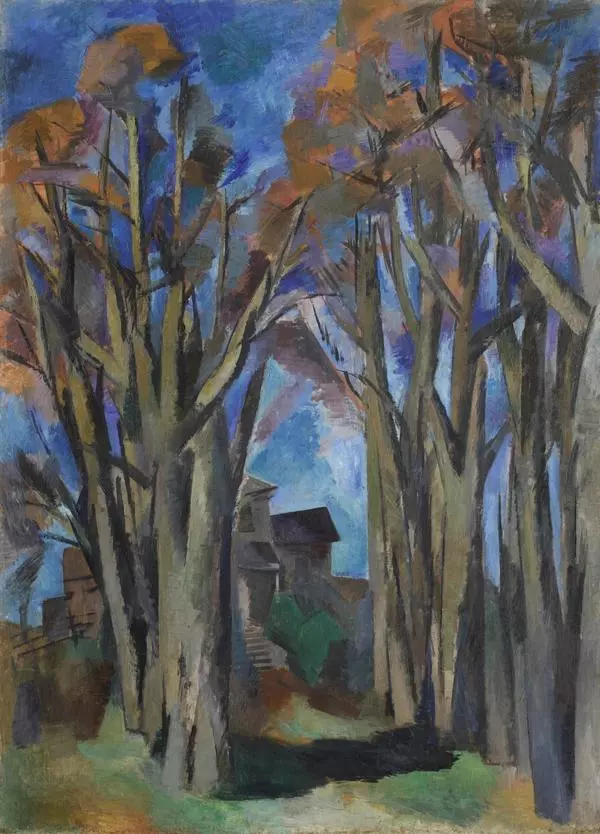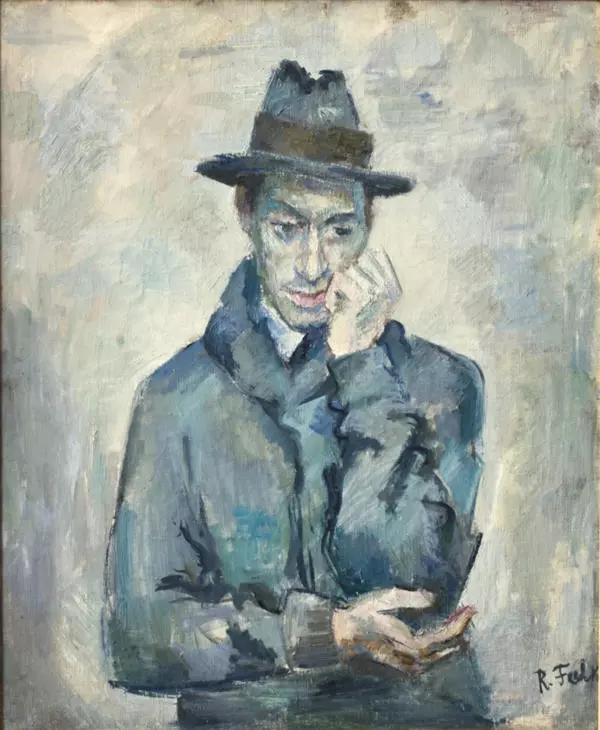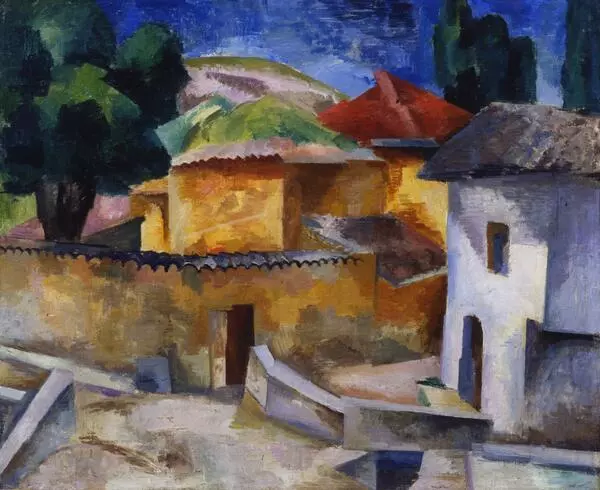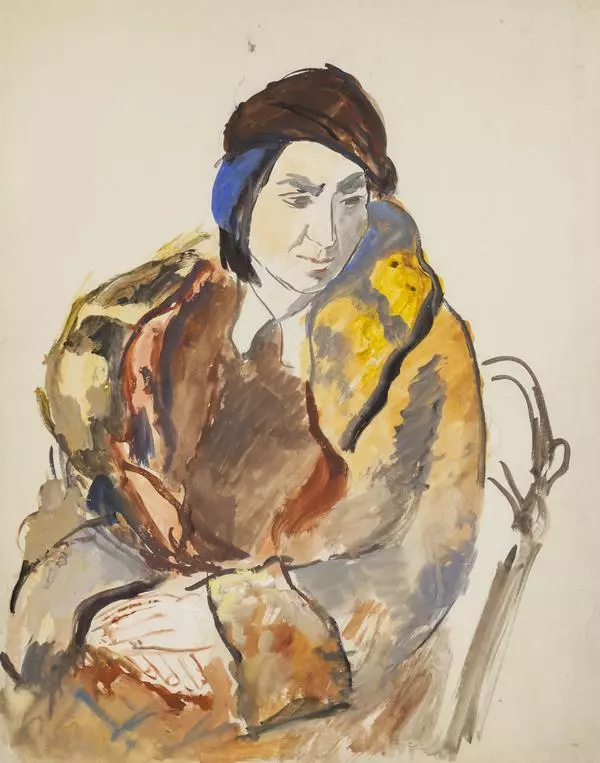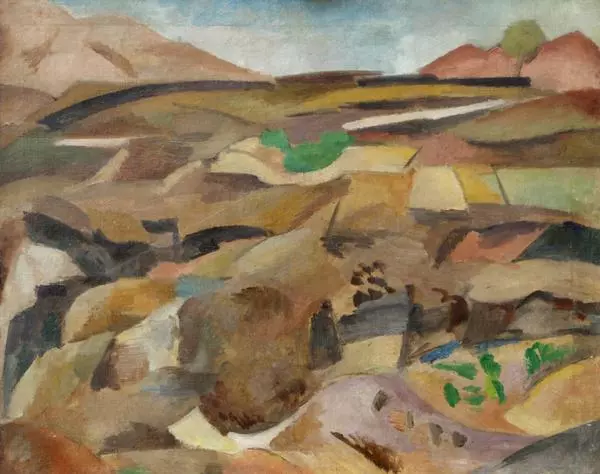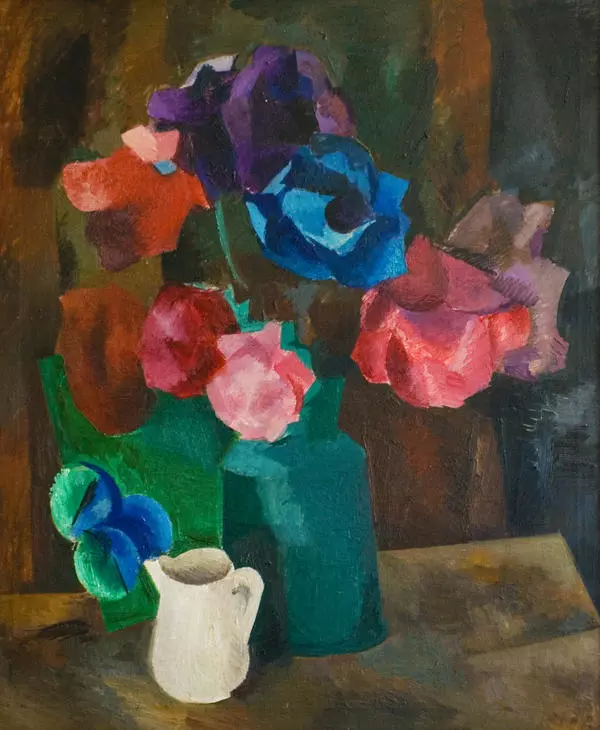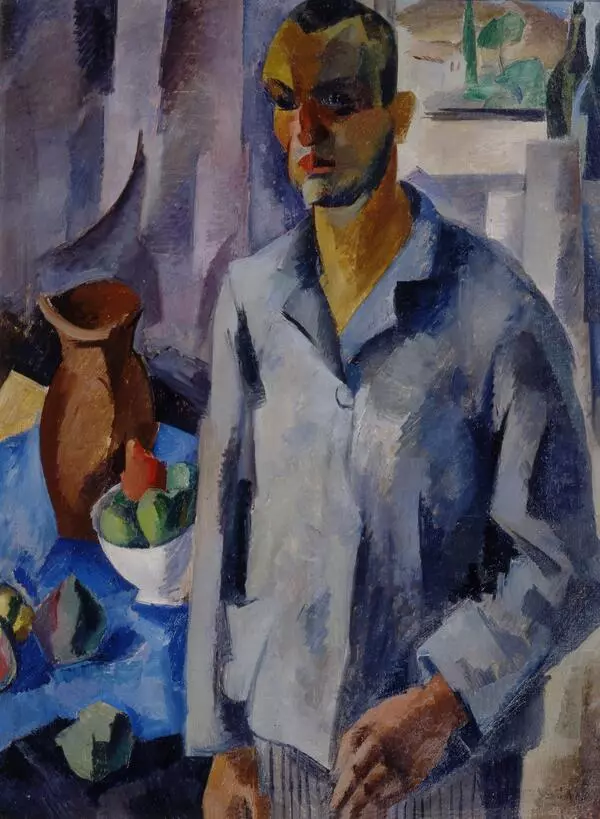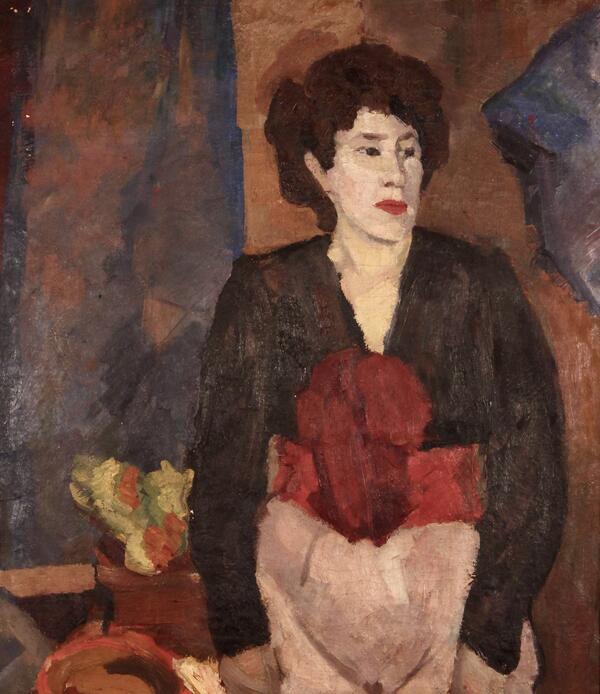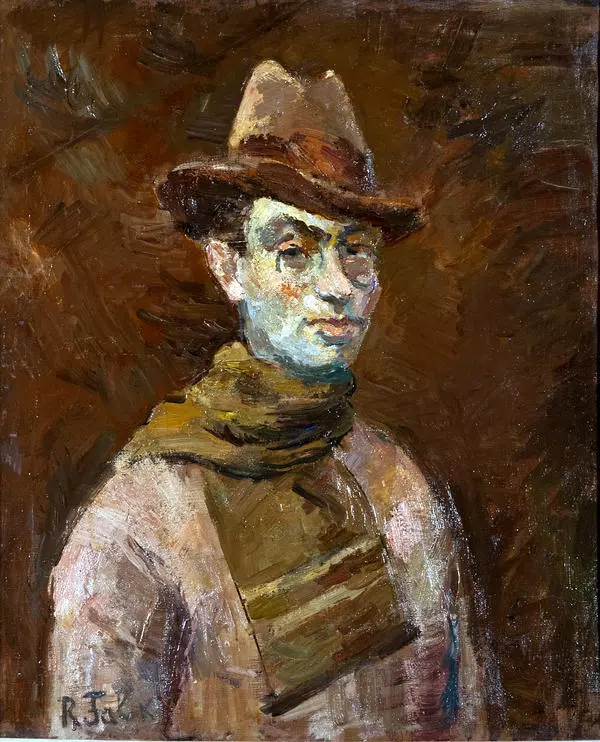Robert Rafailovich Falk is a distinctive and outstanding Soviet artist of the 20th century, one of the founders of the “Jack of Diamonds” avant-garde association. The Museum of the History of Obninsk houses four works by the artist. One of them is the painting “A House in the Village of Pyatkino”, created in 1939.
In 1928 Falk left for Paris, where he lived and worked for nearly ten years. While abroad, the artist missed his homeland. In one of his letters to his mother he wrote, “I miss the simple Russian rural landscape a great deal.” On his return to the Soviet Union, Robert Rafailovich decided to realize his dream and set off for the village of Pyatkino in Kaluga Oblast.
Falk rented a single-story log peasant house in the village. The painting shows it on the left. Next to it stands a woman, the owner of the house.
Anna Troyanovskaya, daughter of the doctor Ivan Troyanovsky, helped the artist to settle at Pyatkino. Anna Ivanovna and Robert Rafailovich studied together at the Moscow School of Painting, Sculpture and Architecture and were old friends. In 1930 Anna Ivanovna sold part of her estate in Bugry to Pyotr Konchalovsky, but she still owned a small plot of land and an outbuilding.
Robert Falk was a frequent guest of hers. They were joined by the young composer Yury Biryukov. Together they talked a lot about art, played music and made sketches. Robert Rafailovich played the piano splendidly, and in the evenings they “played four hands for hours on end”.
In Pyatkino, Falk worked extensively on the subject of “Harvesting”, making sketches of village life for a future large painting. One of the landscapes from that summer, “Cabbage Fields”, is kept in the Kaluga Regional Museum of Fine Arts.
“A House in the Village of Pyatkino” is a typical example of the artist’s landscape work. Falk paid great attention to the sky and spoke about it in the following way,
In 1928 Falk left for Paris, where he lived and worked for nearly ten years. While abroad, the artist missed his homeland. In one of his letters to his mother he wrote, “I miss the simple Russian rural landscape a great deal.” On his return to the Soviet Union, Robert Rafailovich decided to realize his dream and set off for the village of Pyatkino in Kaluga Oblast.
Falk rented a single-story log peasant house in the village. The painting shows it on the left. Next to it stands a woman, the owner of the house.
Anna Troyanovskaya, daughter of the doctor Ivan Troyanovsky, helped the artist to settle at Pyatkino. Anna Ivanovna and Robert Rafailovich studied together at the Moscow School of Painting, Sculpture and Architecture and were old friends. In 1930 Anna Ivanovna sold part of her estate in Bugry to Pyotr Konchalovsky, but she still owned a small plot of land and an outbuilding.
Robert Falk was a frequent guest of hers. They were joined by the young composer Yury Biryukov. Together they talked a lot about art, played music and made sketches. Robert Rafailovich played the piano splendidly, and in the evenings they “played four hands for hours on end”.
In Pyatkino, Falk worked extensively on the subject of “Harvesting”, making sketches of village life for a future large painting. One of the landscapes from that summer, “Cabbage Fields”, is kept in the Kaluga Regional Museum of Fine Arts.
“A House in the Village of Pyatkino” is a typical example of the artist’s landscape work. Falk paid great attention to the sky and spoke about it in the following way,

